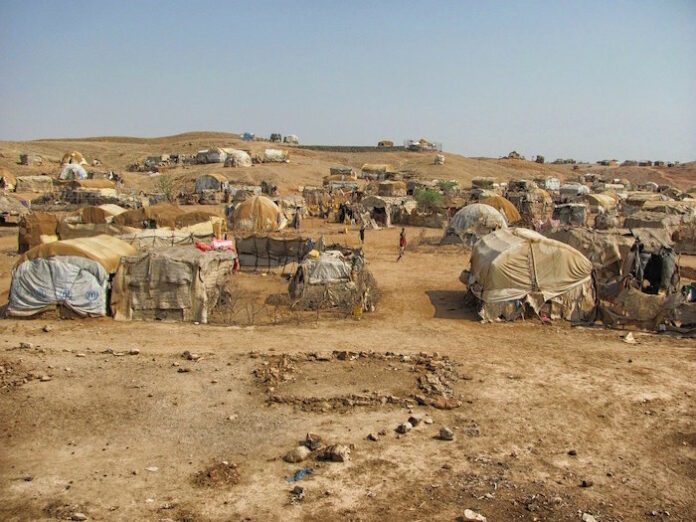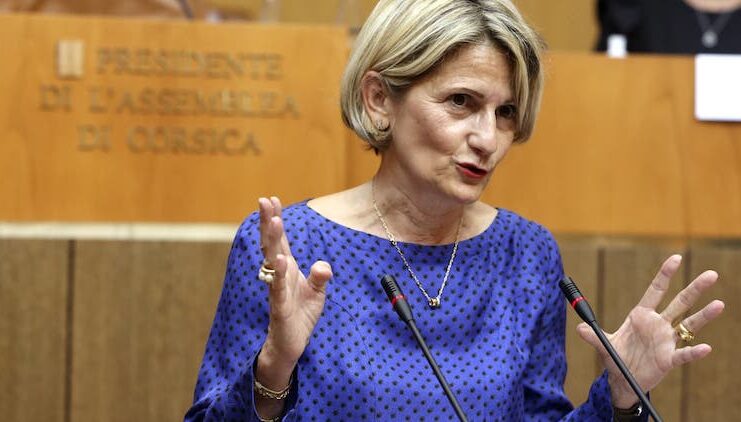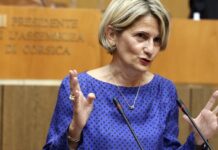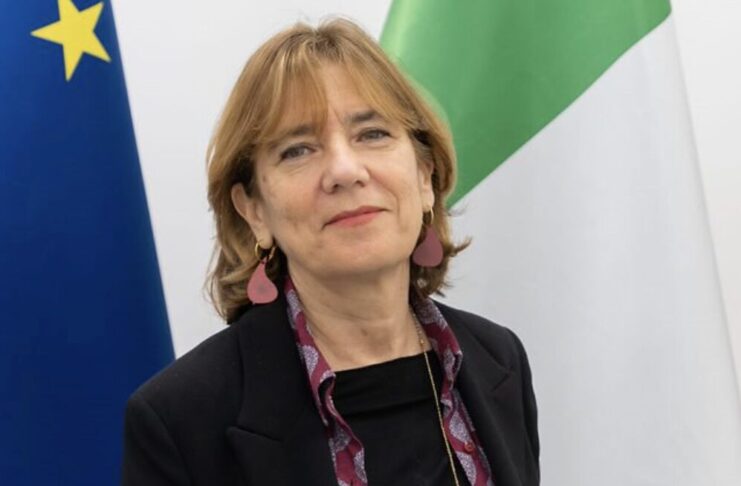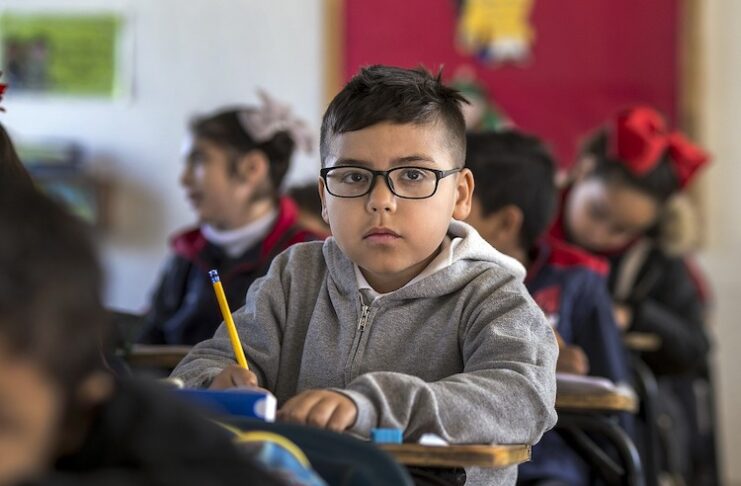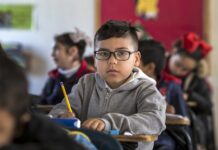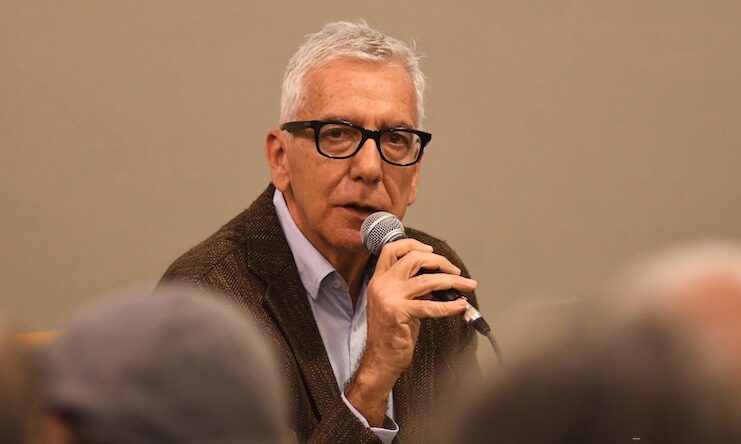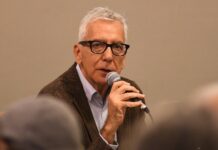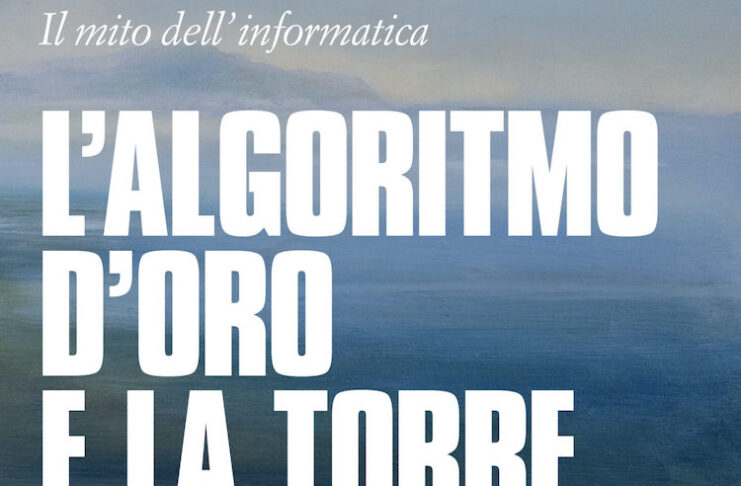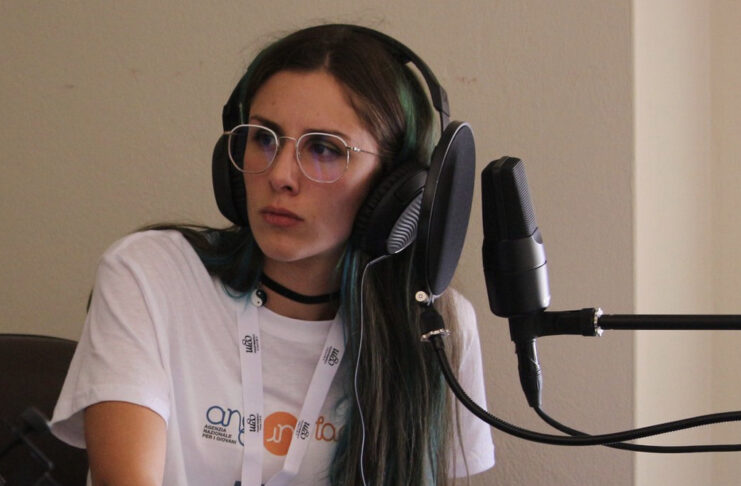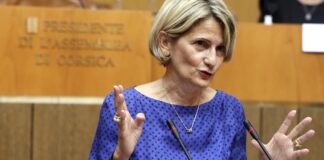Interview with Emilio Drudi, former editor of Il Messaggero di Roma e Lazio Journal, member of the Comitato Nuovi Desaparecidos and author of the book Fuga per la vita (Simple). For years, he has been investigating the immigration issues, dealing with the tragedy of refugees from the South of the world, conducting a series of journalistic reports and national and international investigative reports.
Some conflicts seem secondary or underestimated by the national press and the related public and political debate. The one currently taking place in Tigray is one of them. How did it start, and what is currently happening in this region?
According to Addis Ababa Government, the ongoing war in Tigray is not even a war. Instead, it is an internal operation of public order to bring to justice the Popular Liberation Front leaders (PLF), which has apparently put itself outside the constitution, threatening the Ethiopian nation’s very integrity.
This is both a civil and a regional war. On the one hand, it is a Civil war because it is fought on fiercely opposed fronts by Ethiopian armies: the federal army, supported by the Amhara militia and the troops of the TPLF. Simultaneously, it is a regional war because Eritrea – which is a foreign State and, therefore, extraneous to an internal operation of public security – played an essential role from the start, clearly in agreement with Addis Ababa. Eritrea led the attack on Tigray from the North, from November 2end, 2020, occupying a vast area of the territory that, going from Humera at the west (on the border with Sudan) to Adigrat (the country’s second city, on the road to Asmara) at east, pushing southwards, beyond Axum and Adigrat itself, to the threshold of Macalle, the capital. The toll of the conflict is frightening: after five months, we are talking about more than 50,000 dead, 75,000 refugees who have fled to Sudan, about 2 million internally displaced persons, 4.5 million people living in poverty, enormous destruction and the heavy suspicion that rape and hunger are being used as “war weapons” to break down the population’s resistance.
The casus belli was the attack by Tplf troops on the command of federal military units.
For Addis Ababa Government, it would be proof of the Tigrinya leadership’s desire to dismantle the Ethiopian nation, with the prospect of a large independent Tigray state. For the Tplf, however, it would be an action aimed at preventing Tigrian autonomy’s suffocation through strict military control of the regional state by the federal army. But this is only the final act. The causes appear more remote: they date back to the “country project” emerging from the policy conducted by Ethiopian PM Abiy Ahmed (of Oromo and Amhara ethnicity), who came to power in April 2018 succeeding the resigning Hailemariam Desalegn, after almost thirty years of Tplf-led Government, although Tigray represents only 6% of the total Ethiopian population.
Abiy was chosen as Prime Minister, among other reasons, because of his Oromo origin, to give a sign of pacification towards the Oromo ethnic group, the largest in Ethiopia, but permanently excluded from the “control room”. In this context, Oromo was marginalised and conducted an increasingly tough fight against the central Government for years, suffering arrests, persecutions, summary convictions, killings.
As Prime Minister, Abiy started the dismantling of the Ethiopian People’s Revolutionary Democratic Front (EPRDF), the ethnic-regional coalition born from the victorious resistance against Colonel Mengistu’s Derg and dominated by the TPLF. He created a new movement in its place, named the Prosperity Party, as a preamble to a centralising policy. If it was implemented, it would lead to the subsequent progressive weakening of the ethnic-regional constitution, which was launched after the victory against the Derg, under Meles Zenawi’s impetus, the historic leader of the Tplf and Prime Minister of the Federal Government from 1995 to 2012.
It was also characterised by the success of the openness and reforms promoted since April 2018, in particular: the lifting of the state of emergency that, albeit with brief interruptions, had lasted for years, the release of political prisoners, the invitation to opposition leaders in exile to return home, the agreement with the Ogaden Liberation Front to end a decades-long internal conflict, the peace with Eritrea to end the 20-year war that arose from a border dispute around the village of Badme. Abiy’s project has become increasingly popular, so much so that the various regional components of the EPRDF have largely dissolved into the Prosperity Party. In the name of the ethnic-regional constitution, the only one to resist was the Tplf (whose Ministers were thus excluded from the Government). It is also worth mentioning the resumption of protests – once again put down by the police with extreme violence and many arrests- by the Oromo component. Oromo’s disappointment was generated by – what estimated being- a long series of failed commitments by Abiy about a different distribution of power, taking into account local and regional autonomy.
The turning point came with the postponement of the federal elections scheduled for August 2020, which were supposed to measure, for the first time, the real strength of Ethiopia’s various ethnic-political components after the advent of Abiy. It justified the postponement by the problems caused by the Coronavirus pandemic. The Tplf claimed that Covid’s postponement argument was just a pretext to take time to strengthen the Prosperity Party. Therefore, ignoring the central Government’s ban under the pretence that its authority had “lapsed” after the postponement of the August national election deadline, it decided to hold elections for the Tigray assembly in September 2020 anyway, claiming regional autonomy. Although the federal electoral offices described the elections as having no legal basis, they resulted in a clear victory for the Tplf, which won 152 seats compared to just 38 for the opposition.
On a collision course with the TPLF, Abiy has met his “natural ally” in the Eritrean dictatorship of Isaias Afewerki. He has always considered the TPLF to be his main enemy, considering it responsible for the international isolation which led Eritrea to become a military “pariah state” for years, especially after the events that followed the war for Badme – which cost the two sides about 100,000 dead between 1998 and 2000. This war subsequently led to a condition of “no war-no peace” that lasted until the agreement promoted by Abiy in June-July 2018. That agreement led to Abiy being awarded the 2019 Nobel Peace Prize. Big converging interests have merged: the removal of the main internal obstacle for Abiy, the revenge against the “enemy of all time” by Isaias Afewerki, probably with the plan of being able to play a different role in the Horn of Africa and at the international level, also thanks to the opening of credit granted by various Western chancelleries to his regime after the peace with Addis Ababa.
The Tigrinya attack on the northern military command of the federal army appears, therefore, only as a “pretext”: the war against Tigray had already been in the air for some time, and many opponents of the Eritrean dictatorship, indeed, believe that the strategy was set up in the first months after the peace agreement between Addis Ababa and Asmara. Rumours are, in particular, of a plan – may be agreed as early as summer 2018 – to re-establish an Ethiopia-Eritrea federation as before the long war of independence (1961-1991). In short, the project would be a single federal state, led by Abiy and Afewerki. To be realised, it would require the removal of the Tplf, which is certainly against it and able to create significant obstacles as the leading party of a solid and autonomous Tigray. Maybe it is precisely this converging interests to ‘wipe out the main common enemy’ that could explain, at least in part, this war ferocity.
Much has been said about the massacre in Axum on 28 and 29 November. What happened in that city?
This terrible massacre proves the extreme ferocity of that war. Axum is one of the symbols of Ethiopia and, in particular, of Tigray. The centuries-old empire that ruled much of East Africa developed there. There are important historical and religious sites such as the Obelisk Park and the St Mary of Zion Cathedral complex. According to tradition, the Ark of the Covenant, brought from Israel to Ethiopia by Negus Menelik I, still reside there. In the second half of November, the occupation by Ethiopian and Eritrean troops created high tension. According to several testimonies, there was a threat to take the Holy Ark and transfer it to Bahir Dar, on Lake Tana (Amhara area). Thus, there was a counter-attack by the troops of the Tplf by November 27, probably joined by some locals. The following reprisal, carried out by the occupying Eritrean troops, turned into a massacre reaching its climax on 28 and 29 November. All the evidence points converge on this scenario: the experiences of some of the survivors, the investigations carried out by Amnesty and Human Rights Watch, and a Federal State body such as the Ethiopian Human Rights Commission. In its preliminary report, the Commission reports at least 100 victims. All other dossiers mention more than 700: many “executions” in the sacred area of the Cathedral, many others killed in cold blood in the city, street by street, house by house. Moreover, in the surrounding rural area, another 700 people would have died, according to estimates.
How did the United Nations and the human rights organisations intervene?
The United Nations took immediate action through organisations present in Ethiopia or the Horn of Africa, such as the High Commissioner for Refugees (UNHCR), the Office for Humanitarian Affairs (OCHA) the Office for Victims of Sexual Violence in Conflict. The first detailed reports that broke the absolute embargo on news and the total blackout of communications to and from Tigray imposed by Addis Ababa came from these bodies. The same applies to the International Red Cross and organisations such as Amnesty International, Human Rights Watch and Médecins Sans Frontières. Based on these interventions and reports, an independent international enquiry was proposed to the UN Security Council, as requested by UNHCR and OCHA from the very first days of the war. The proposal, however, was rejected by the veto of China and Russia. Many of these same organisations have also denounced the total blocking of humanitarian aid programmes for the populations of the areas overwhelmed by the war: at their request, there are few glimmers of hope, even if a large part of the territory, especially in rural areas, is still off-limits.
What are the European Union and Italy doing in the light of reports of crimes of this nature?
The United States Government, led by President Biden, has taken the most decisive action. Also, based on UN or US Office of Peace reports, Washington has denounced the unacceptable violence that is emerging, including the suspicion of ethnic cleansing. It has called for the immediate withdrawal of Eritrean troops and Amharas’ militias from Tigray, reinforcing this position by sending its observer, Senator Chris Coons, to Addis Ababa. The European Union has joined the request to bring the Eritrean army back across the border and has suspended a series of funding and contributions to the Ethiopian Government. In short, Brussels is moving in tune with Washington. The G7 foreign ministers have taken the same line. It does not appear, however, that Italy has made its voice heard much. Yet, as a former colonial power in the Horn of Africa, it could have and could play an important role. It is especially the case in Eritrea, where the Italian presence is older. For at least ten years, the Italian Government has opened a controversial “line of credit” towards the Afewerki regime, even more after the Peace Agreement between Asmara and Addis Ababa. Prime Minister Giuseppe Conte was proud of being the first Western head of Government to lead a state mission to Eritrea in the aftermath of the Badme 20-year war.
In contrast, a few months later, Deputy Foreign Minister Emanuela Del Re led another official visit to Asmara, together with about 80 Italian companies. Considering that a large part of the reported crimes is ascribed to Eritrean troops, perhaps Rome could have used that ‘line of credit’ to exert some pressure on Asmara. To raise human rights as an imperative, think, for example, about the so many refugees repatriated under escort by Eritrean soldiers after being captured in the Shimelba and Hitsats camps. Again, there is a need to clarify what happened in Tigray, in support of the UN international enquiry, particularly as the fire in Tigray could spread to most of the Horn of Africa.
Is there a real risk of the conflict spreading?
In the current situation, this danger exists. For example, a border conflict has been raging between Ethiopia and Sudan in the Fashanga triangle since the Tigray war. There have already been firefights and casualties. It looks like a domino with many pawns ready to fall. In recent times, for example, Somalia shows many similarities with Ethiopia and Eritrea: perhaps it is seeking support and allies against Kenya, with which it risks a clash over the question of Somaliland, over the increasing dispute over the southern borders and over the definition of the territorial waters in the Indian Ocean, where there is an enormous offshore oil field. There was much talk about multiple Somali military units to train in Eritrea in the middle of the war. The suspicion has arisen that, at least, some of them were deployed against the TPLF, but both Asmara and Addis Ababa immediately denied it. In this context, Kenya’s threat to close the enormous camps of Dadaab and Kakuma and to push the more than 410,000 refugees towards neighbouring Somalia, the majority of whom have fled from Somalia – but also from Ethiopia, South Sudan, Uganda, etc. – could be part of an anti-Somali strategy. It would be a tremendous blow for entire East Africa but especially for Mogadishu. Nor should we forget the sword hanging over the conflict for the use of Nile water between Ethiopia on one side, Sudan and Egypt on the other, following the construction of the new large dam on Ethiopian territory, in the Benishangul-Gumuz region, 30 kilometres from the Sudanese border.
What should Italy and the EU do in this perspective to try to manage the flow of refugees fleeing Tigray and many other wars, environmental, economic or social crisis contexts around the world?
Let’s start with Tigray. In recent months, some 75,000 refugees have arrived in Sudan from Ethiopia, mainly from Tigray, but several thousand from other troubled regions: Oromia, Gumuz and so on. The point is to end the war with a just peace centred on a massive truthful justice operation, which will allow the refugees to return and remove the spectre of revenge and recourse that seems the roots of this war. It will not be easy because the violence that has emerged is a landmine on the road to peace. But there is no other way. The international community must use all its influence and ability to mediate to bring the Tigrinya people and other ethnic groups to embrace it with conviction and loyalty, even before the Federal Government and the TPLF, finding the strength to overcome the mutual wrongs from the past for a better future. I like to think, on the same path, of a ‘federal manifesto’ for the entire Horn of Africa. It may seem like a pipe dream, given the current deep crisis in the region. But great projects are often born out of great crises. As for refugees/migrants, more generally, we will never find a solution if we continue to consider it a problem of emergency and security. More than 80 million refugees, as the UNHCR counted in 2020, and the millions of people fleeing economic and social crises, environmental disasters, poverty and a total lack of prospects for the future, are not an emergency, but instead, a structural problem that we must approach as such. In a nutshell, it is about changing the policy of the North towards the South. We often hear people say: “Instead of welcoming migrants, we should help them at home”. Well, to help them “at home”, let’s start by not exploiting them at home. It is the first step towards a different North-South policy. It’s a long and challenging path, but I don’t think there are any others. In the meantime, regarding those who are already or will be fleeing, the European migration policy must radically change. The focus has not been on migrants so far, but on how not to let them arrive, by all means. The focus should instead be on people and their rights.
“Read
*Marco Omizzolo, sociologist and Eurispes’ researcher.


